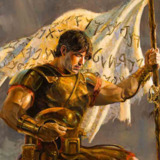Super Mario Galaxy: The Greatest Game Ever Made
By MormonWarrior 14 Comments
Since 1985, Nintendo has been at the forefront of video game production. It has been argued that Nintendo saved the industry in a time when gaming had become nearly irrelevant, and they earned their place as kings of the industry with myriad masterpieces. Their games – Super Mario Bros., The Legend of Zelda, Metroid, and many more – have influenced arguably every other game in existence, and their mastery in the field shines in their earnest endeavors.
So it is certainly reasonable to expect that the original saviors of the video game industry would continue to define gaming and push innovation throughout every generation of consoles, and that is exactly what they have done.
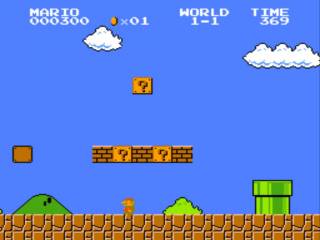
Zoom to 2006. Nintendo’s newest and most controversial home console, the Wii, had a lot to prove. As a basic proof-of-concept game aimed at a growing casual market, Wii Sports showed what kind of quirky things the Wii could do. However, the Wii was technologically behind the HD standard of Sony’s PlayStation 3 and Microsoft’s Xbox 360. What the Wii needed was a high-caliber killer app, the likes of which Nintendo is famous for producing despite any perceived shortcomings.
This killer app was Super Mario Galaxy, a game that could arguably be called the greatest game ever made. Considering the substantial involvement of Shigeru Miyamoto, the creator of Zelda, Donkey Kong and Mario, it can hardly be surprising.
What exactly made Galaxy so special? From the outset, it looked like it followed the formula created by the revolutionary Nintendo 64 classic Super Mario 64 with sharp polygonal platforming and a focus on item collection to progress. Aside from the space theme, it seemed like it wasn’t much of a stretch from what had been established a million times before. It could have so easily been just a cop-out like many companies are wont to do.
But upon release, Super Mario Galaxy shocked the gaming public. It certainly used many elements of past Mario games as a reference and blueprint, but at its core Galaxy was its own creature, totally unique and much, much more than a sum of its parts. From the get-go, it was clear that Mario was up to a new standard of cinematic quality. The prologue to the game, set in the Mushroom Kingdom just outside of Peach’s infernal castle, is vibrant and happy, already kicking off the marvelous and sweeping soundtrack and setting the awe-inspiring tone.
The story progresses as most Mario games do, with Bowser showing up to whisk away the princess for whatever reason, but the scope of what happens and the production level of the scenes involved takes things to an entirely new level. Seeing Mario get pulled up into space, then subsequently being blasted away from saving the princess is such a gripping way of retelling this old story mechanic.
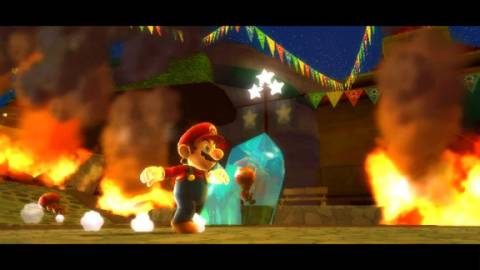
From there, the game goes off introducing the incredible gameplay. One of the dozens of new gameplay systems introduced was the concept of round planetoids which are impossible to fall off of. After getting past the initial “whoa” factor and vertigo, it turns out to be incredibly intuitive and interesting. It’s used to thrilling effect throughout the game, though there is so much variety that it never gets stale.
A common theme of Wii games within the first year of release was capitalizing purely on the motion based gameplay at the expense of accuracy and quality. This also meant a lot of normal, mainstream games suffered from compromised control schemes that really didn’t work. The controls of Super Mario Galaxy, however, are incredibly intuitive and only use Wii controls where it makes sense. It shows an incredible understanding on Nintendo’s part of the limitations of their console. There are those few levels that do implement the unique motion-based controls, and they’re done in a succinct and fun way, so as to not become overbearing. Even removing direct camera control, which sounds like a nightmare, ended up being exactly the thing to do as the designers were able to craft an automatic system that works like a dream, rarely if ever becoming a problem.
The greatest single addition to the basic controls of Mario is his spin move, activated by shaking the remote or the nunchuk attachment. The spin is used very much like the classic Raccoon or Cape Mario, both used to stun and defeat enemies as well as assisting traversal in a way to instill confidence during tricky jumps and in expanding the range of level design. The frustrating just-short jumps so common in polygonal games, even past Mario games, is all but removed with the inclusion of this simple-but-inspired move.
One of the largest pitfalls of the two previous Mario games was the mind-numbingly repetitive nature. Despite its impact to polygonal games in general, Super Mario 64 was a severely flawed game due to its new and unexplored mechanics. Objectives were largely the same from beginning to end, and the direct sequel Super Mario Sunshine some years later only worsened the problem. Part of the genius of Super Mario Galaxy is the constant variety it affords the player. After playing the first few obligatory levels, things open up dramatically, allowing the player to explore whichever worlds he desired. If a place was too frustrating at a given time, several other stars were available. Ultimately, the game could be beaten after getting only half of the 121 available stars and taking the path of least resistance.
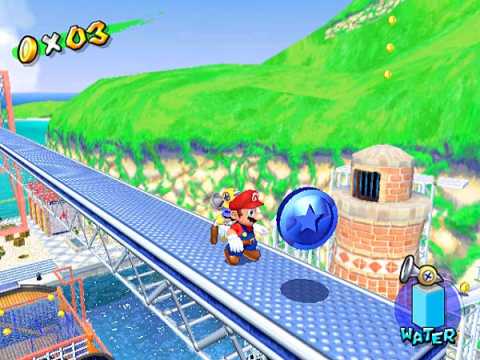
What Galaxy understood, and which most other 3D platformers seemed to fail to grasp, was that the gameplay was the reward. Sure, stars are available to collect, but they are simply a means to progress and open up more worlds to explore. Nintendo cut down on the excess and eliminated pointless collecting. Coins were simply there to manage health, and perhaps unlock an in-level bonus area once in a while. Gone were the frustrating 100-coin stars from the N64 and Sunshine. New “ star bits” were an added collectible that simply added a fun diversion while traveling around, simply requiring a point of the Wii remote to collect and never demanding backtracking or grinding to get the sufficient amount to unlock new side levels.
The wonder evoked when exploring the beautiful and intricate new worlds is perhaps the greatest part of the experience. Taking a page from another of Nintendo’s masterpieces, Super Mario Bros. 3, the levels were short but sweet. Unlike Sunshine that had made levels gargantuan and somewhat unmanageable, Galaxy had focus in each of its many “galaxies.” A guided path in each episode made trips back as memorable and unique as the first level. Also unlike Sunshine, the central theme – cosmic space travel – was not overused. There is always the idea that you’re on some group of small planets, but they’re each so different and based on completely unique motifs.
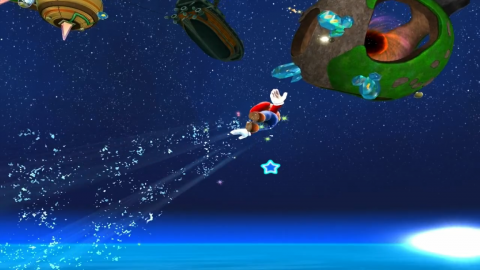
A key part of the incredible nature of Super Mario Galaxy is the phenomenal score, written mainly by Mahito Yokota and assisted by series veteran Koji Kondo. Originally planned as a more Latin-themed soundtrack, the unique sweeping music is a mix of orchestral grandeur, semi pop themes, and classic Mario. Plus, it was recorded almost completely with a live studio symphony, something Nintendo had promised with their decidedly disappointing Twilight Princess. It evokes a sense of beauty to match the incredible visual design and amazing gameplay. Simply put, it is one of the most moving and emotional scores to any game ever, and that it totally fits the game just means that it is one more essentially flawless element in the incredible masterpiece of a game.
A common complaint about the Wii is that due to the lack of HD functionality and its decidedly last-gen processor, games on it look like garbage. Most certainly, this is generally the case. Despite the general rule, Super Mario Galaxy is a visual marvel, both from a technical and an artistic standpoint. The colorful environments are pure eye candy and the incredibly imagination of the game creates that mystical sense of wonder at a near-constant level.
One great aspect of Super Mario Galaxy is its callbacks to other games in the series. Mario is capable of using a variety of special powers and suits like the Super Mario Bros. series; certain stages contain music that hails to previous games in the series; characters and Easter eggs show up now and again that will bring a smile to any Mario fan. They are added intelligently and with style.
Though the game sports gobs of Mario nostalgia thrown in at good taste and to great effect, Alex Navarro, then working for GameSpot, said of Galaxy (their 2007 Game of the Year): “You could’ve put Bubsy in that game, as long as the level design was the same and…every other facet of that game was identical, you just took the Mario nostalgia out of it, that game would still be pretty friggin’ awesome.” The Mario elements do not make the game – they simply add to it in a way that makes it that much more meaningful. It successfully built upon what Nintendo had built before while including the best of the present.
Now, one important factor of a game contending to be one of the greatest games of all time is overall impact on the industry as a whole, as well as innovation. In a generation dominated by hyper-violent, dirty action-shooters, Super Mario Galaxy’s undefiled innocence shines like a beacon. Though artistic psychos associated with such projects as “I Am 8-Bit” try to read strange pseudo-sexual or violent themes out of Mario, the real key to the series (and pretty much everything from Nintendo) is the definite, unapologetic purity. Mario is super happy, and everything is weird and wonderful and cute all at once. Nothing has even a hint of shady undertones or moody emo-centric politics. Nope. Super Mario Galaxy is unabashed, joyful, enjoyable innocence.

Beyond that, the strides Nintendo has made in a genre many people ignore in this day and age (once again, focused on big-budget online shooters) shows that there is so much untapped potential to be found in every aspect of gaming. Many gamers feel left behind this generation since their favorite styles of games have slipped into bargain-bin quality – Japanese roleplaying games, platformers, etc. In this sort of environment, Nintendo has produced their most polished effort yet, really bringing their A-game and everything they know to the table.
At the same time, there’s a beautiful simplicity to the way things are in Super Mario Galaxy. Anyone could pick it up and play it, but there’s more than enough tooth-clenching challenge for the Mario savant. It’s accessible and inaccessible in ways that only the finest of art is. It touches a deep emotion beyond the scope of just being a game – a beckoning to a realm of possibilities in a beautiful, harmonious, and unsoiled world. It inspires and lifts while so many other games are known for sapping your life away and turning your brain to mush. Only time will tell if the industry will pay attention to what Nintendo has done and realize that every game doesn't need to be a set-piece driven grungy shooter.
Now in 2010, Nintendo has released a sequel that has built upon the gameplay elements found in the original Galaxy in intelligent and ingenious ways. At the same time, in streamlining many of the mechanics and the soundtrack, it has lost a little bit of the stirring level of mystery and splendor. As a game, it evolves as you would expect it to and is exceptionally fun. As an overall experience, it still doesn’t hit the same notes quite as hard as Mario Galaxy did back in 2007.
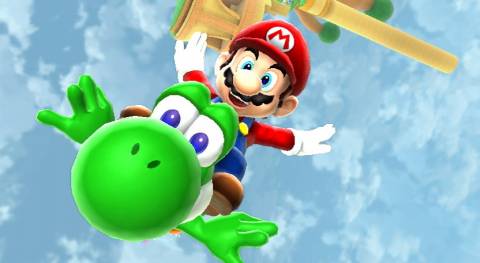
And for these and perhaps many other potentially-explored reasons, Super Mario Galaxy is one of, if not the greatest game ever made.
Feel free to leave educated, meaningful comments. Realize that this analysis is somewhat subjective, just as determining a best game ever made will always be subjective to personal taste, age, values, etc.
